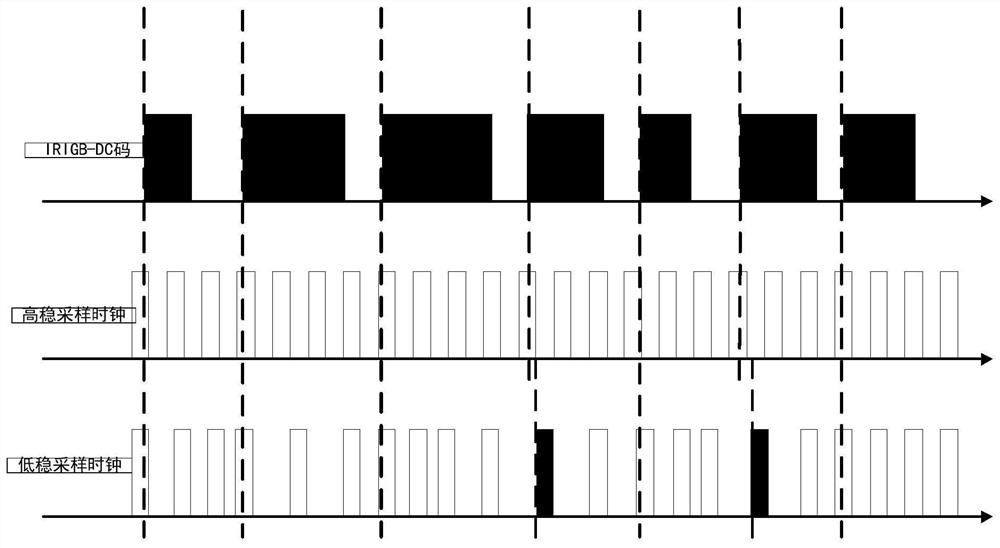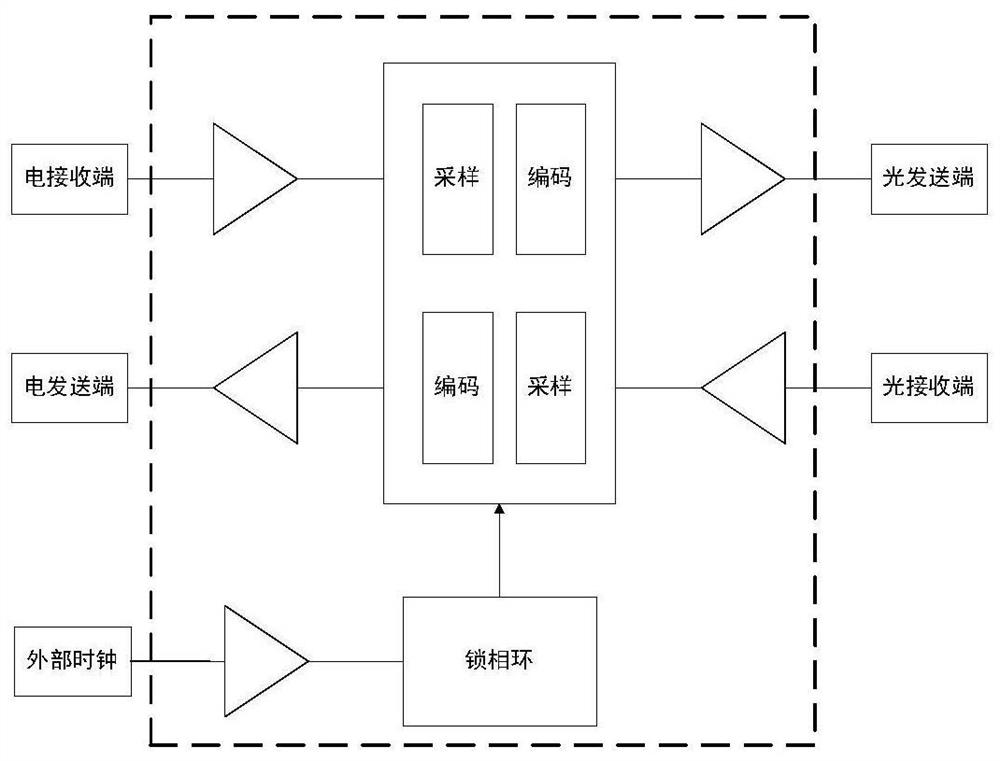A method, device, medium and equipment for optical fiber unidirectional time-frequency synchronization signal transmission
A technology of time-frequency synchronization and signal transmission, which is applied in the direction of multiplexing communication, optical multiplexing system, time division multiplexing system, etc., to achieve the effect of eliminating the effect of inherent delay
- Summary
- Abstract
- Description
- Claims
- Application Information
AI Technical Summary
Problems solved by technology
Method used
Image
Examples
specific Embodiment 1
[0048] Depend on figure 2 It can be seen that when the IRIGB-DC code signal is sampled by the high-precision external clock input by the external clock interface of the photoelectric converter, there will be no phase jitter relative to the quasi-time delay of the high-precision time-frequency signal or the jitter is within an acceptable range.
[0049] On the public network side, taking the short-term stability of ±0.03ppm external clock 10MHz input as an example, the phase jitter generated when a stable IRIGB-DC code electrical signal is extracted unidirectionally and converted into an optical signal does not exceed Δt1=±30ns.
[0050] On the isolated network side, the photoelectric converter works in the mode of extracting the line clock, and the jitter generated when converting this optical signal into an electrical signal does not exceed Δt2=±30ns.
[0051] At this time, the IRIGB-DC code electric signal is introduced into the isolated network user equipment, and the time...
PUM
 Login to View More
Login to View More Abstract
Description
Claims
Application Information
 Login to View More
Login to View More - Generate Ideas
- Intellectual Property
- Life Sciences
- Materials
- Tech Scout
- Unparalleled Data Quality
- Higher Quality Content
- 60% Fewer Hallucinations
Browse by: Latest US Patents, China's latest patents, Technical Efficacy Thesaurus, Application Domain, Technology Topic, Popular Technical Reports.
© 2025 PatSnap. All rights reserved.Legal|Privacy policy|Modern Slavery Act Transparency Statement|Sitemap|About US| Contact US: help@patsnap.com



